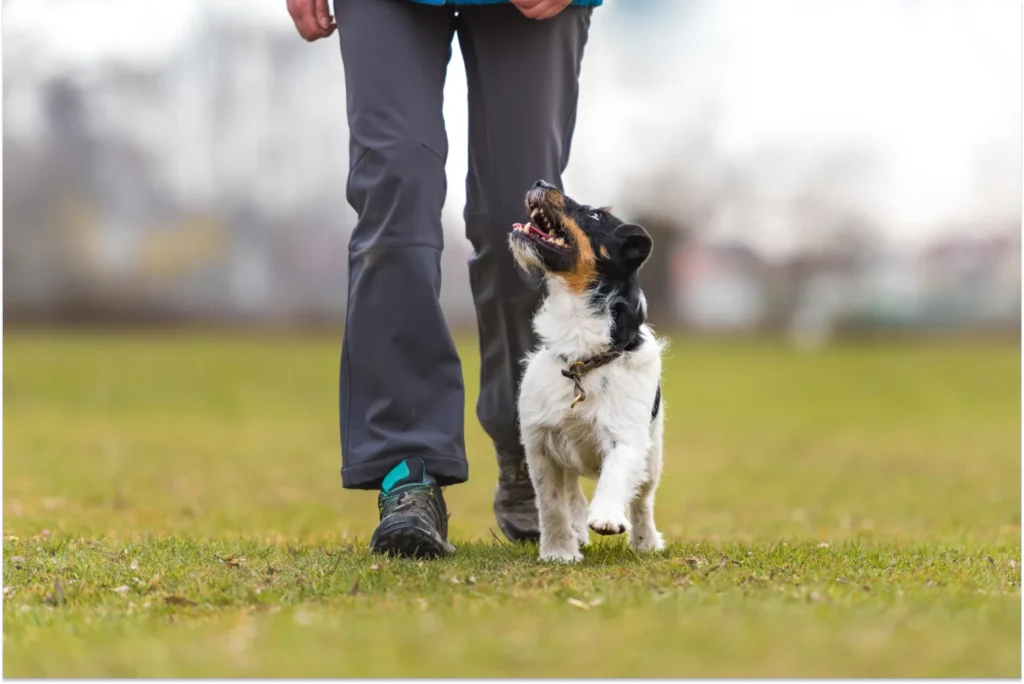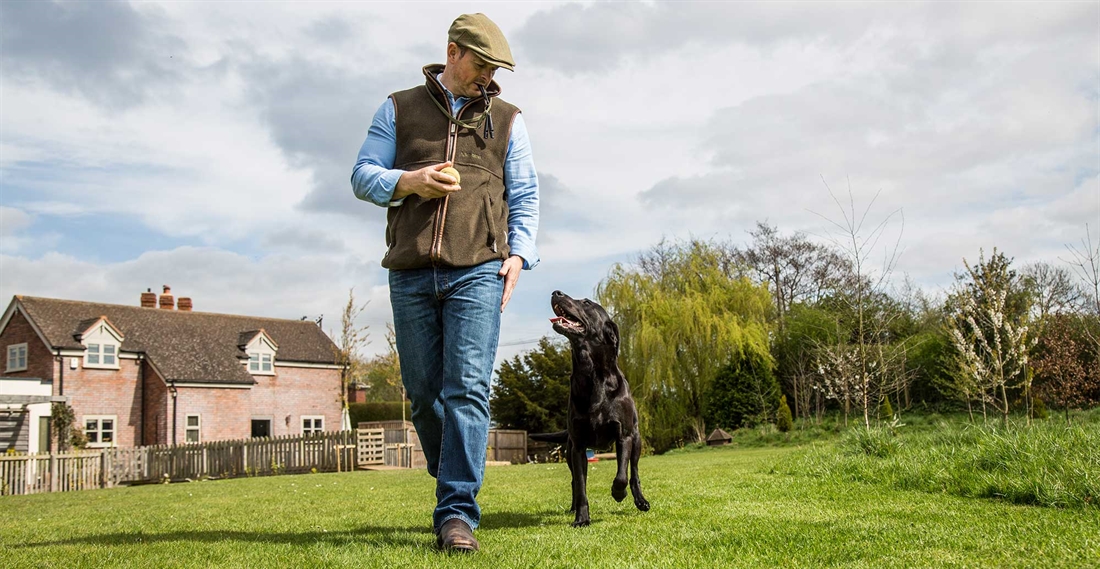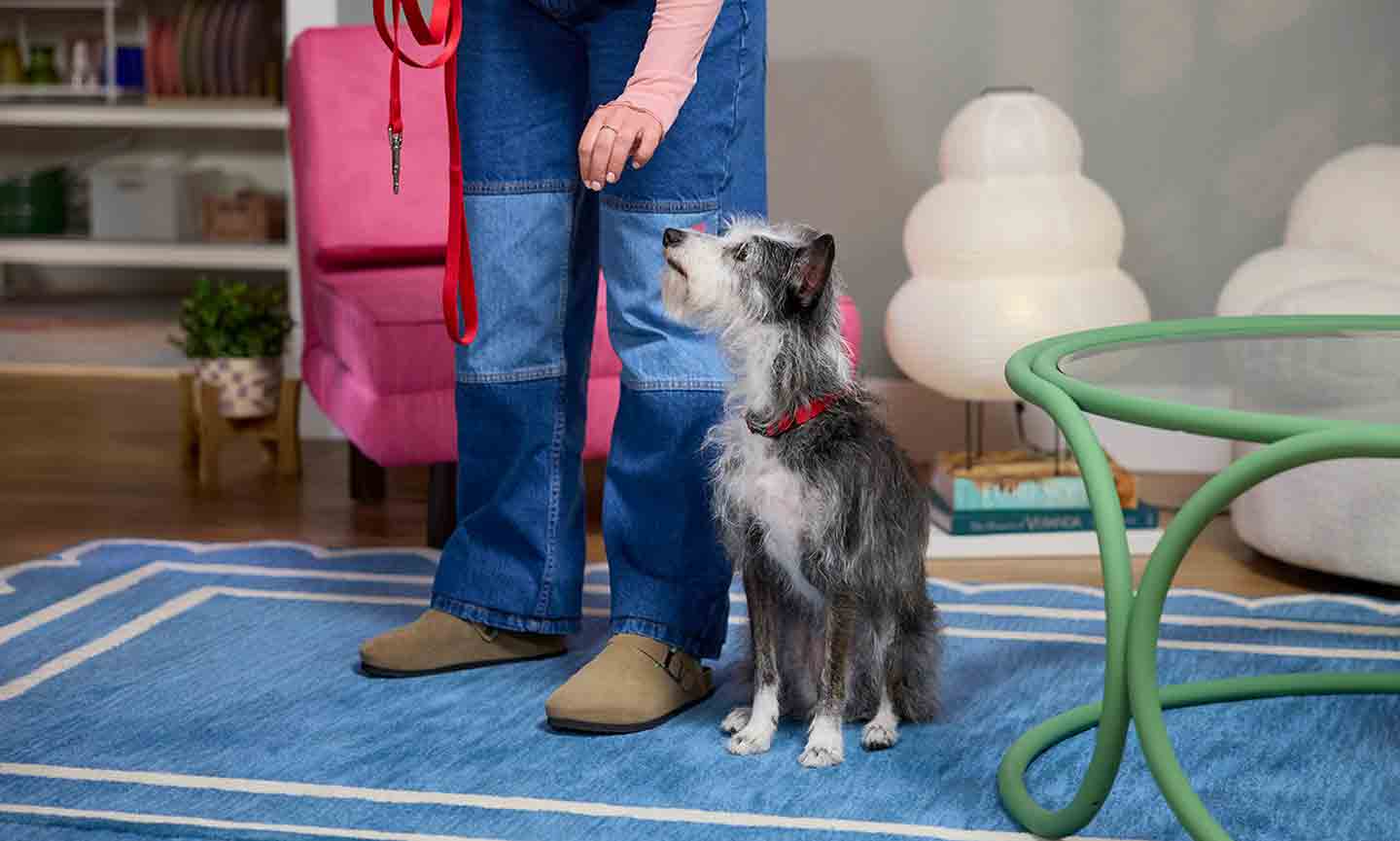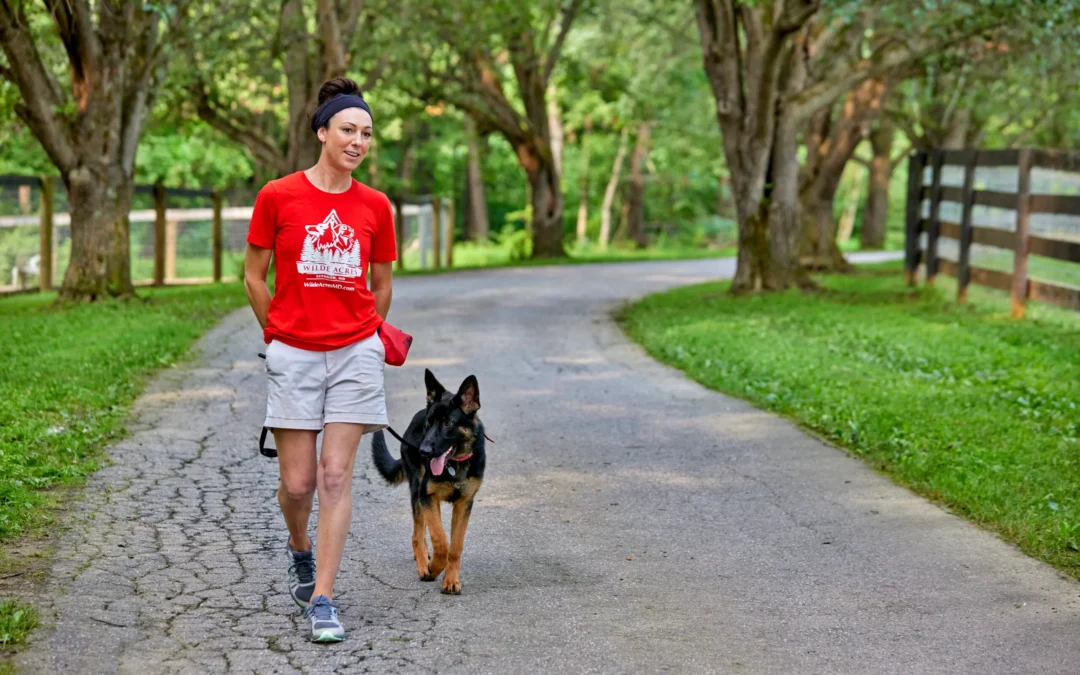Walking a dog should feel like a team effort not a tug-of-war. When my dog pulls ahead or zigzags on the leash every stroll turns into a struggle. That’s why teaching a dog to heel isn’t just about obedience—it’s about making walks calm and enjoyable for both of us.
I’ve discovered that training a dog to heel can transform our daily routine. With the right approach I can help my dog stay by my side and focus on me even with distractions all around. It’s a skill that builds trust and makes every walk smoother and more fun.
Understanding the Heel Command

Understanding-the-Heel-Command
The heel command means my dog walks beside my left leg, matching my pace with a loose leash. Unlike general walking, heeling keeps his focus on me, even during distractions like other dogs or loud noises. This command forms the basis for controlled walks, public outings, and advanced obedience activities.
The American Kennel Club defines “heel” as the position where the dog’s head or shoulder stays inline with my left leg (AKC, 2023). This position gives structure and signals my leadership to the dog. Dogs who understand this consistently show reduced pulling and more attentiveness during outings.
When I train the heel command, I use consistent cues like a verbal “heel,” a hand signal, or both. Rewards such as treats, praise, or a favorite toy reinforce correct positioning right beside my leg. Practicing in various environments—parks, sidewalks, and busy streets—builds reliable heeling behavior in any situation.
Key Elements of the Heel Command
| Element | Description | Example |
|---|---|---|
| Position | Dog’s head or shoulder aligned with my left leg | Dog’s front leg beside my left knee |
| Cue Type | Verbal or hand signal used to initiate the command | Saying “heel” or tapping my left side |
| Reinforcement | Positive reward given when the dog maintains position | Small treat or “good boy” when next to me |
| Distraction Training | Gradually introducing distractions to improve focus during the command | Practicing near passing joggers |
Common Heel Command Mistakes
| Mistake | Impact on Training | Example |
|---|---|---|
| Inconsistent cues | Dog becomes confused or unfocused | Alternating words like “walk” and “heel” |
| Pulling on the leash | Teaches resistance, not cooperation | Dragging the dog forward |
| Lack of reward | Reduces motivation to stay in position | Ignoring correct behavior, no praise |
| Ignoring environment | Poor generalization to real-world | Only practicing indoors, never outside |
Mastery of the heel command strengthens communication between my dog and me, laying the groundwork for calm, coordinated adventures outside.
Preparing for Heel Training

Preparing-for-Heel-Training
Establishing the right foundation streamlines heel training and sets a dog up for success. I combine proper equipment with an ideal environment so my dog can focus and learn quickly.
Choosing the Right Equipment
I select gear that prioritizes safety and comfort. A well-fitted collar or harness matches my dog’s breed and size, reducing any discomfort during sessions. Harnesses work better for dogs prone to pulling or respiratory challenges. I avoid harsh tools like choke or prong collars because they increase the risk of discomfort or injury. For control and clear communication, I choose a durable leash between 4 and 6 feet.
| Equipment | Recommended Use | Advantages | Not Recommended For |
|---|---|---|---|
| Flat Collar | All dogs | Comfortable, easy to fit | Pullers, brachycephalic breeds |
| Harness | Pullers, small breeds | Reduces strain, increases control | Over-excited large breeds |
| Standard Leash | All training sessions | Maintains proximity | Off-leash or recall training |
| Choke/Prong Collar | None | None | All training, due to safety risk |
Setting Up a Distraction-Free Environment
I set up training in a quiet space free from distractions, such as indoors or in a fenced yard. My sessions work best when my dog is alert but not overly excited. I limit each session to short, consistent periods—optimally 5–10 minutes—to maintain my dog’s focus. Eliminating competing stimuli allows my dog to concentrate on following cues and learning the heel position.
| Environment Type | Distraction Level | Best Use |
|---|---|---|
| Living Room (Indoors) | Minimal | Early heel training, reinforcement |
| Backyard (Fenced) | Low | Gradual introduction of mild distractions |
| Sidewalk/Busy Park | High | Advanced training, proofing behaviors |
Step-By-Step Guide on How to Train a Dog to Heel

Step-By-Step-Guide-on-How-to-Train-a-Dog-to-Heel
I break down heel training into focused steps that build the dog’s skills gradually. Each step targets a specific skill or habit, ensuring that my dog learns both the command and the behavior expected during walks.
Teaching Basic Focus and Attention
I always start training heel by building my dog’s attention. In a quiet indoor space or fenced yard, I call my dog’s name, then say “heel” as I hold a treat near my left thigh. The closer my dog gets to the right position, the sooner I mark the moment with a clicker or a “yes” and deliver a treat. By repeating this in 30-second-to-2-minute sessions, my dog connects focusing on me with earning rewards.
Focus and Attention Training Table
| Factor | Details |
|---|---|
| Location | Home, fenced yard |
| Cue | Name + “heel” |
| Lure | Treat at left thigh |
| Reward | Treat, praise, clicker |
| Duration per session | 30–120 seconds |
| Frequency | Several times daily |
Introducing the Heel Command
I introduce the heel command by saying my dog’s name, then “heel,” stepping forward or backward. If the dog lags or wanders, I guide them gently to my left side and immediately reward them when they’re in the correct spot. I keep sessions short but frequent, focusing on positivity and association with the word “heel.”
Command Introduction Table
| Cue Example | Movement | Correction | Immediate Reward |
|---|---|---|---|
| “Luna, heel!” | Step forward/backward | Guide gently by collar | High-value treat |
Reinforcing Good Behavior With Rewards
I maintain momentum by offering high-value treats like chicken or cheese every few steps when my dog stays in position. Using clear verbal markers (“yes”) or a clicker, I make sure my dog understands when they’ve done well and celebrate their consistency.
Reward Reinforcement Table
| Treat Type | Cue for Success | Reward Frequency | Marker Used |
|---|---|---|---|
| Chicken, cheese | Staying in heel | Every 2-3 steps | “Yes”, clicker |
| Praise | Eye contact | Each success | Verbal praise |
| Toy | Turn or stop | After new skill | Play marker |
Progressing to Real-World Situations
I raise the challenge by adding distractions once my dog heels reliably indoors. I change environments, increase walking speed, and practice turns. If the dog struggles, I remove distractions or slow down the pace. For added control, I hold rewards at my chest and deliver them discreetly from my left. I also use commands like “watch me” to encourage focus.
Progression Table
| Situation | Distraction Level | Method Change | Additional Command |
|---|---|---|---|
| Sidewalk | Mild | More turns | “Look” |
| Local park | Moderate | Add stops | “Watch me” |
| Busy street | High | Reduce speed | Eye contact cue |
| Dog event | Very High | Lower treat use | Maintain heel |
Consistent use of positive reinforcement and gradual exposure to distractions helps my dog understand that walking at heel brings rewards and attention in every environment.
Common Challenges and Troubleshooting
Even after a strong foundation, dogs sometimes face challenges during heel training—most often pulling on the leash or losing focus around distractions. I address these issues with dependable techniques and adjust my approach based on each dog’s personality.
Dealing With Pulling and Distractions
Pulling and distractions disrupt consistent heel walking. I stop walking as soon as my dog pulls ahead, using a verbal “heel” cue and waiting for my dog to return to my side. I reinforce desired behavior with a treat when the dog stays beside me.
When distractions appear, I begin using them at a distance, rewarding my dog for keeping focus. As progress continues, I move distractions closer and use high-value treats like pieces of chicken or cheese for extra motivation. I hold treats at my chest so my dog remains aligned beside me, avoiding jumping or crossing in front.
Table: Pulling & Distraction Solutions
| Problem | Correction Method | Reinforcement Type |
|---|---|---|
| Pulling Ahead | Stop movement, use “heel” cue | Wait for alignment, treat |
| Mild Distractions | Start at distance, reward focus | High-value treats |
| Strong Distractions | Gradually increase proximity | Increase reward quality |
| Jumping/Lunging | Hold treats close to chest | Clicker/Verbal marker |
Adjusting Techniques for Different Dog Personalities
Different personalities require adapted strategies. With easily distracted dogs—like young labs or hounds—I keep sessions shorter, around 5–7 minutes, and gradually raise distraction levels. Stubborn breeds—such as terriers or huskies—benefit from clearer leash cues and consistent praise every time they return to heel. Nervous or shy dogs need gentle encouragement, minimal distractions, and frequent positive rewards. Energetic or working breeds—like border collies—usually stay engaged with advanced heel games, such as sudden direction changes or tempo shifts.
Table: Adapting to Dog Temperaments
| Dog Personality | Training Adjustment | Example Breeds |
|---|---|---|
| Easily Distracted | Shorter sessions, fewer distractions | Young Labs, Hounds |
| Stubborn/Independent | Firm corrections, high praise | Terriers, Huskies |
| Shy/Nervous | Gentle voice, slow pace, positive rewards | Greyhounds, Whippets |
| Energetic/Eager | Sudden changes, varied pace | Collies, Malinois |
Consistent verbal cues—such as “heel,” “look,” “slow,” and “quickly”—help me clarify expectations in every session. Each correction and reward builds lasting reliability, especially when tackling these everyday training challenges.
Tips for Long-Term Success
I reinforce heeling behavior by consistently rewarding my dog’s focus and correct position next to my leg. Using high-value treats like bits of chicken or cheese keeps my dog motivated during training, especially in distracting environments. Training sessions remain short, usually five to ten minutes, to prevent boredom and maintain enthusiasm.
I practice the heel command in multiple environments. Starting indoors with few distractions, I transition to quiet yards, then to busier sidewalks and parks. This gradual change helps my dog generalize the heel behavior. If distractions increase, I return briefly to easier settings and reward consistent performance.
I use luring by holding a treat near my left leg to guide my dog into the heel position during early training. Once my dog consistently follows, I fade out the lure and reward only after the correct behavior. Consistent body language, with my treat hand near my belly button, clarifies expectations for my dog.
I schedule frequent, positive sessions. Instead of one long session, I train multiple times each day for a few minutes. The repeated practice—always ending sessions on a positive note—improves my dog’s reliability.
I track progress, adjusting rewards and settings as needed. When my dog hesitates or gets distracted, I reduce the challenge by returning to a quieter setting or using more valuable rewards, then gradually build up again.
Table 1: Reward Types and Their Uses
| Reward Type | Context for Use | Example Food |
|---|---|---|
| High-value Treats | Outdoor, high-distraction | Chicken, cheese |
| Medium Treats | Indoor, low-distraction | Kibble, soft treats |
| Play/Toys | Breaks between sessions | Tug toy, squeaky ball |
| Praise | Consistent throughout | Verbal “good job” |
Table 2: Training Session Progression
| Training Setting | Average Distraction Level | Focused Practice Time |
|---|---|---|
| Indoors (quiet room) | 1/10 | 5–10 minutes |
| Fenced Yard | 3/10 | 5–10 minutes |
| Sidewalk | 6/10 | 5–8 minutes |
| Park (busy) | 9/10 | 3–5 minutes |
I always match the treat value and session duration to the distraction level and my dog’s focus, encouraging long-term heeling success.
Conclusion
Training my dog to heel has truly transformed our walks into moments of connection and calm. With patience and the right approach I’ve seen how consistency and positive reinforcement can turn a challenging skill into a rewarding habit for both of us.
Every dog learns at their own pace so I always stay patient and celebrate the small wins. By making heel training a regular part of our routine I’ve built a stronger bond with my dog and made our time outdoors more enjoyable and stress-free.
Frequently Asked Questions
What does it mean to teach a dog to heel?
Teaching a dog to heel means training your dog to walk beside your left leg on a loose leash, keeping their head or shoulder aligned with you. This command ensures your dog remains focused and under control during walks, even with distractions present.
Why is heel training important for dogs?
Heel training is important because it builds trust, improves communication, and makes walks safer and more enjoyable. It also teaches your dog to focus on you rather than being distracted by the environment, reducing pulling and other unwanted behaviors.
How should I start heel training with my dog?
Begin heel training in a quiet, distraction-free environment like your living room. Use high-value treats to encourage your dog to stay by your side, give clear cues, and reward them consistently for correct positioning.
What equipment is best for heel training?
The best equipment includes a well-fitted collar or harness that is comfortable and safe, along with a 4–6 foot durable leash. Avoid harsh tools like choke or prong collars, as they can cause harm and hinder learning.
How long should heel training sessions last?
Training sessions should be short, about 5–10 minutes each, to maintain your dog’s attention and prevent frustration or boredom. Multiple short sessions are more effective than one long session.
How do I progress heel training to more distracting environments?
Start with basic training at home, then gradually increase distractions by moving to locations like a fenced yard or quiet street. Once your dog can heel reliably, practice in busier areas like parks, ensuring to reward good behavior consistently.
What are common mistakes people make when teaching heel?
Common mistakes include inconsistent verbal cues, lack of rewards, using harsh equipment, and progressing to distracting environments too quickly. These errors can confuse your dog and slow down the learning process.
How can I fix my dog’s pulling or loss of focus during walks?
If your dog pulls or gets distracted, stop walking and wait until they return to your side before moving again. Reward your dog for paying attention to you, especially around distractions, to encourage the desired behavior.
How can I keep my dog motivated during heel training?
Use high-value treats and enthusiastic praise during training, especially when introducing new distractions. Change up treats to keep your dog interested and hold frequent, positive sessions to reinforce learning.
Can all dogs learn to heel, regardless of breed or personality?
Yes, all dogs can learn to heel with patience and consistent training. Adjust your methods for your dog’s personality and energy level, using calm encouragement for shy dogs and engaging games for energetic ones.

